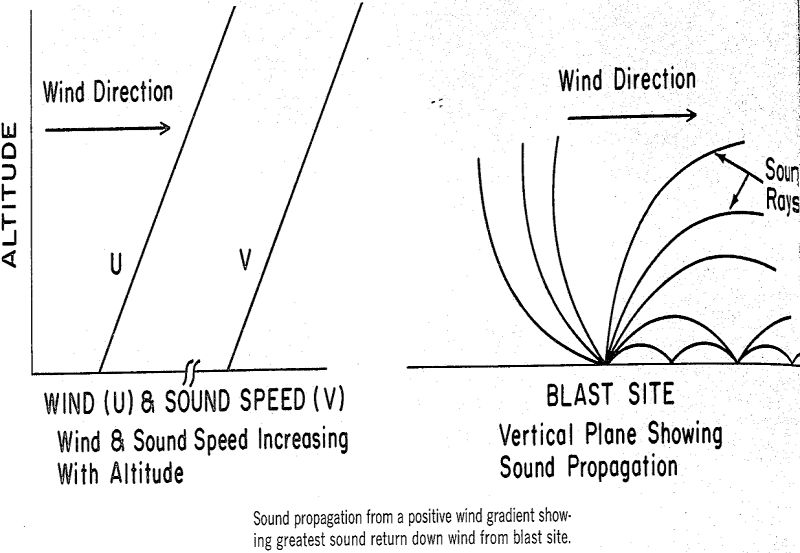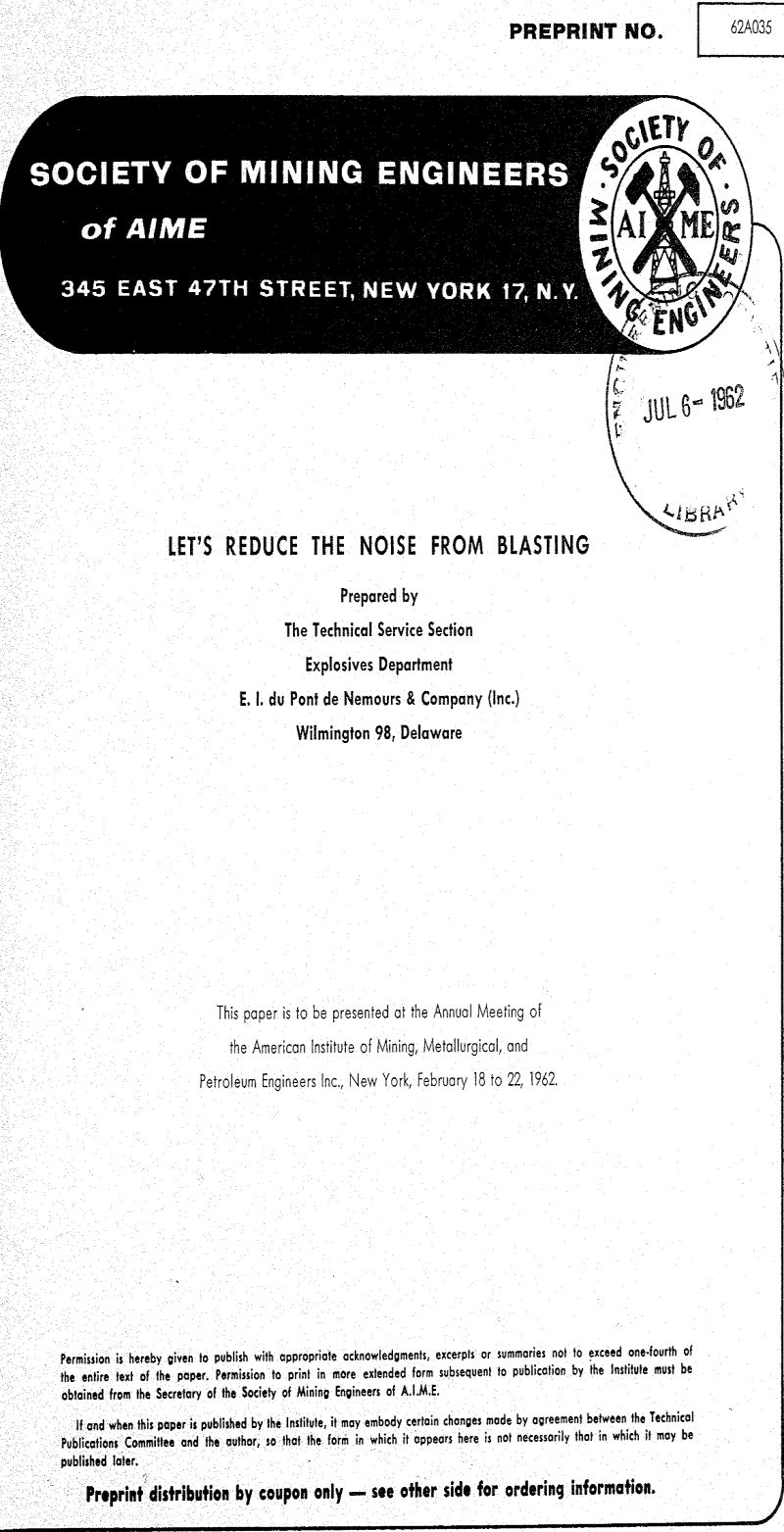Table of Contents
The public relations problems of users of explosives have greatly increased within the past few years. One reason is that explosives and blasting agents are being consumed in increasing quantities. The principal reason, however, is that more people have become physically affected by blasting. Mines, quarries, and construction sites that were formerly in relatively remote locations now find themselves near congested areas. New express traffic ways being constructed to connect the suburbs with downtown areas are being built through the middle of long-established business and residential neighborhoods.
It has been determined that the number of blasting complaints is related to the noise produced. Recognition of this fact resulted from a recent study by New York Trap Rock Corporation. They were convinced from a review of blasting complaints over a number of years that the noise propagation from some blasts was greater than others and found that weather conditions were the culprit. They are now concentrating as much effort and study on noise control as they had previously devoted to reduction of vibrations. Their findings can be summarized as follows:
- Recognition that weather conditions can cause an increase in sound propagation.
- Recognition of the weather conditions that are unfavorable to blasting from a sound propagation standpoint.
- Reduction of complaints by restricting blasting operations to days with favorable weather conditions.
Favorable Conditions for Blasting
- Clear to partly cloudy skies with fleecy clouds and relatively warm daytime temperatures. Unfavorable temperature inversions occur most frequently at night and in some parts of the country may occur on 50 to 75% of the nights during the year.
- Cloudy days with rapidly changing winds, perhaps accompanied by brief showers.
Unfavorable Conditions for Blasting
- The most unfavorable days are those when the air is relatively still. These days are usually foggy, hazy, or smoky.
- Clear, somewhat hazy days with fairly constant temperatures and possibly very light winds.
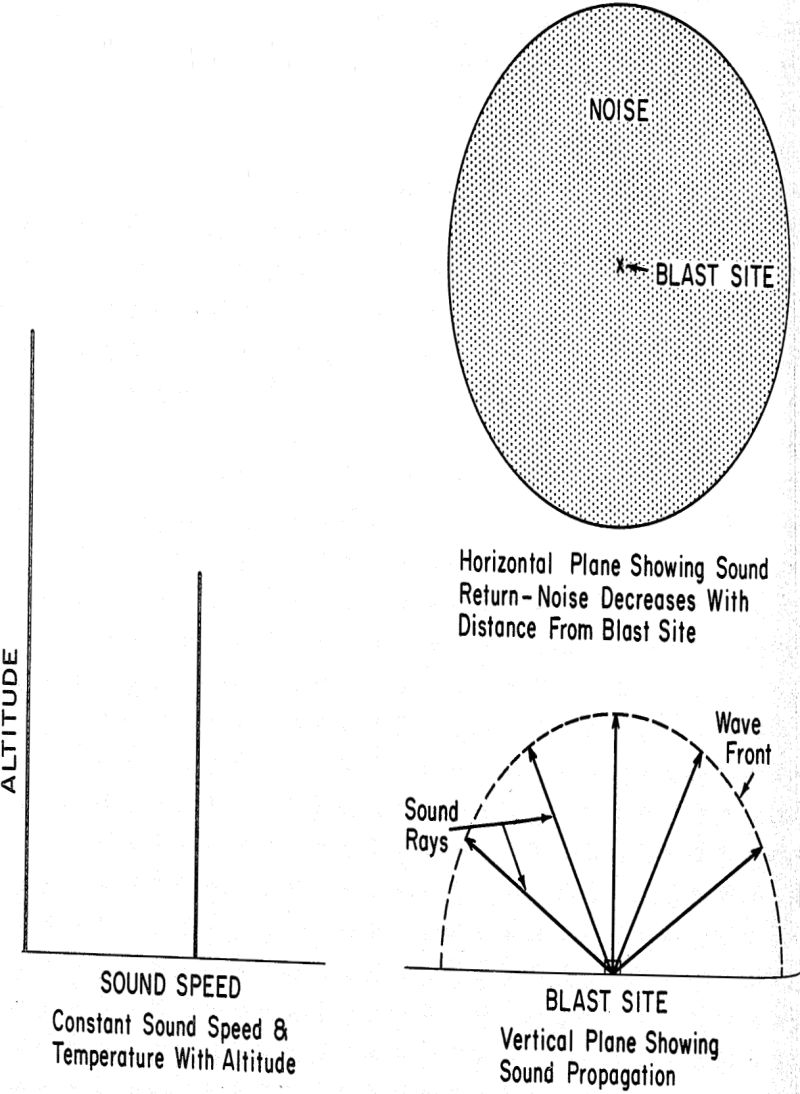
If the weather conditions (temperature and wind velocity) are such that a greater sound velocity in any direction occurs above the earth’s surface, then a sound-speed inversion exists. In this case, parts of the sound wave in the direction of the velocity increase may be returned to the ground by refraction (bending of the waves) and produce a louder noise at the points of return.
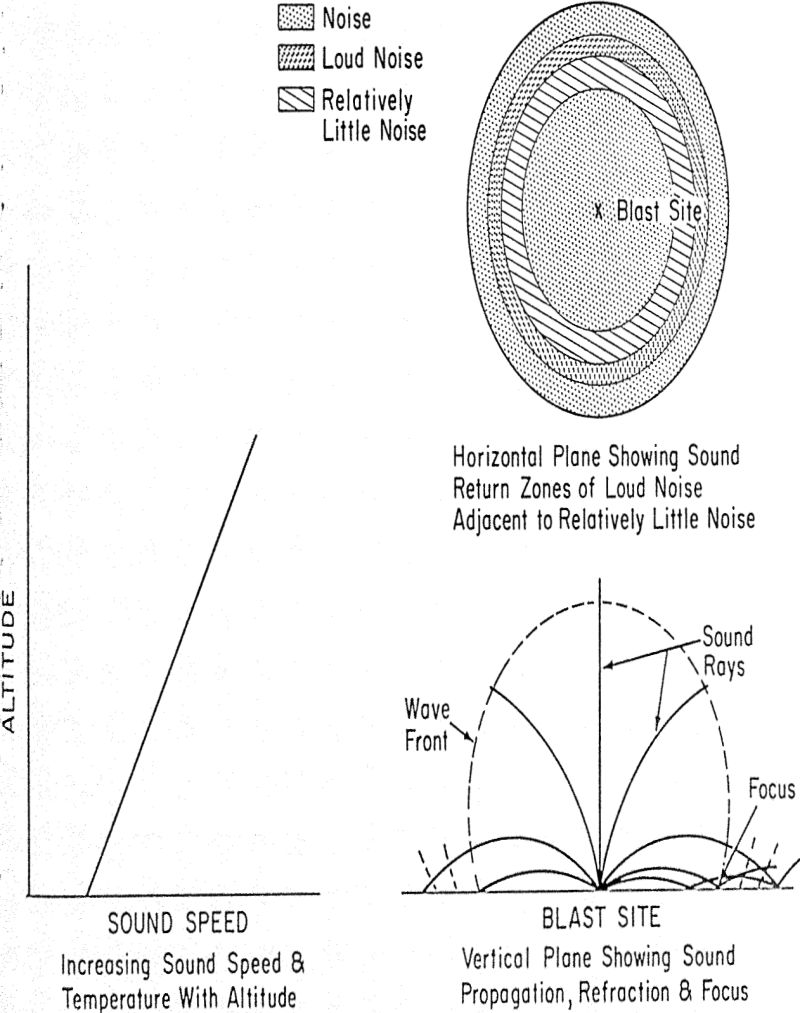
Air temperature decreases in the lower altitudes, then increases for a similar distance and finally decreases again within the altitude of influence. In this case, a zone of relatively little noise exists near the blasting location, with loud noise disturbance at more distant locations. This condition is illustrated below: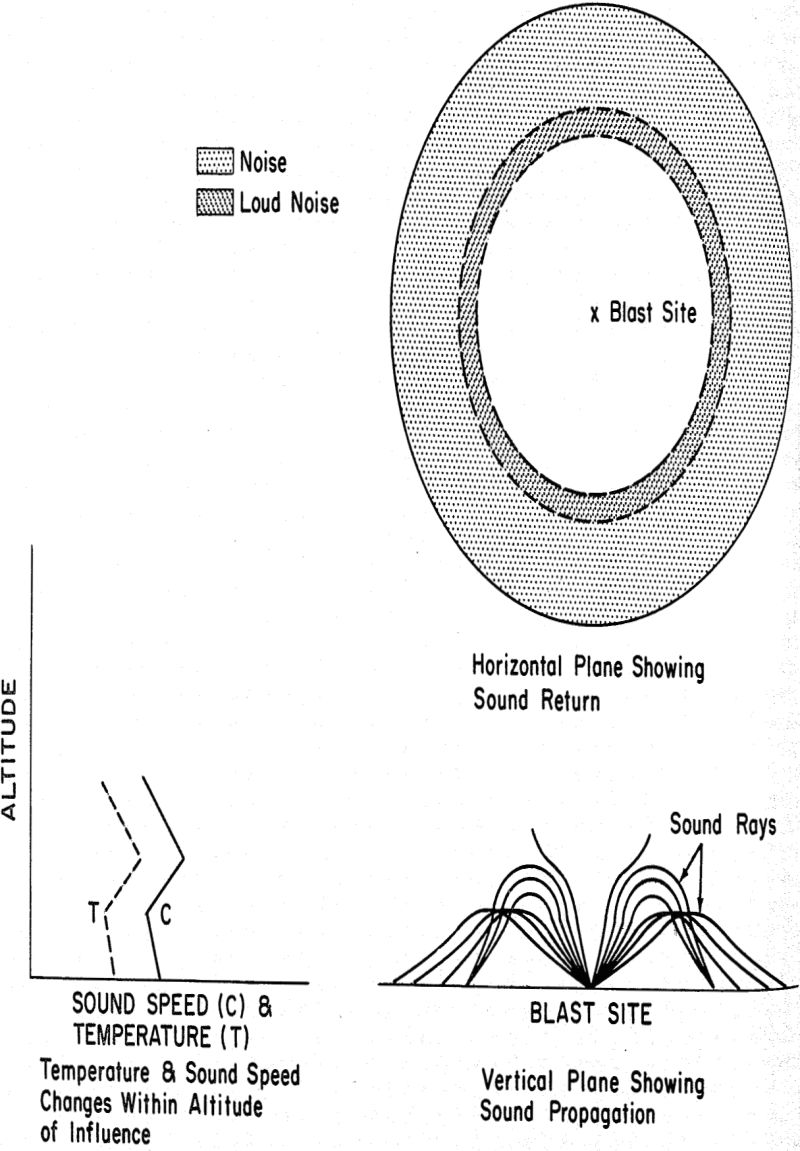 A third common sound-speed inversion that may exist is one in which, with altitude, the temperature successively increases, decreases, increases once more at a greater rate, and finally decreases. In this case, there is a zone of noise surrounding the blasting site and proceeding in all directions. The noise in the zone nearest the blast site will be a rumble of relatively long duration.
A third common sound-speed inversion that may exist is one in which, with altitude, the temperature successively increases, decreases, increases once more at a greater rate, and finally decreases. In this case, there is a zone of noise surrounding the blasting site and proceeding in all directions. The noise in the zone nearest the blast site will be a rumble of relatively long duration.
